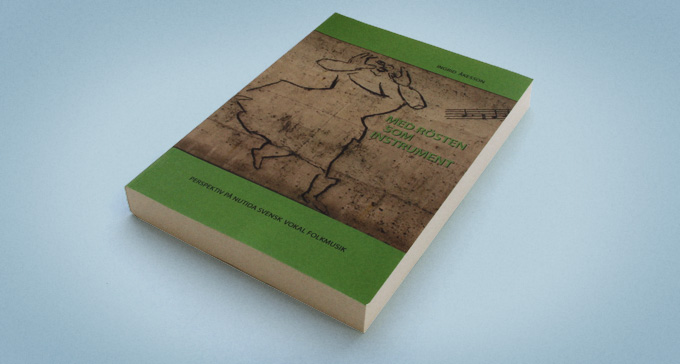
Med rösten som instrument – Perspektiv på nutida svensk vokal folkmusik. Foto: Jonas André
With the Voice as an Instrument
With the Voice as an Instrument: Perspectives on Contemporary Swedish Vocal Folk Music
(Med rösten som instrument. Perspektiv på nutida svensk vokal folkmusik)
By Ingrid Åkesson
After the “folk music vogue” – a vocal vogue. The singing voice has been the centre of a dynamic activity of many kinds in recent decades, within several music areas – largely influenced by female actors. Kulning (herding calls), Bulgarian polyphony, musical improvisation, joik (Sami vocalization), jazz singing, and more, have extended their space and become more visible at festivals, in education, and on theatre stages. Vocal Swedish traditional music – songs, herding calls, and diddling or trall (wordless singing) as dance music – has acquired a new audience on stage and CD in the process of profiling of “folk and world music” as a musical genre. In connection with this profiling, the focus has shifted from ideology toward aesthetics; melody, tonality, style, and sound can be considered the central features.
Ingrid Åkesson’s dissertation, Med rösten som instrument. Perspektiv på nutida svensk vokal folkmusik, is a study which, set against this background, examines how contemporary folk singers relate to, what is generally called, folk music tradition. The dissertation is based on the author’s interviews with artists and teachers within the vocal folk music arena and adjacent areas, as well as on analysis of the music of these singers. One question concerns how performers from different generations, and with various types of musical activity, select and deselect repertoire, role models, and stylistic ideals – that is, how canon and cultural heritage are constantly created and recreated. Another central issue is how the creative and the re-creative processes in the shaping and changing of music learned by-ear, function today in the late modern context. An example is the chiselling out and condensation of “oral-aural” techniques and stylistic devices that become constituents within an elaborate folk music pedagogy. Both practical music making and mental processes can be described as overlapping layers of recreation, transformation, and innovation – in today’s music as well as in a historical perspective.
Ingrid Åkesson is an ethnomusicologist and a research archivist at Svenskt visarkiv. She has been active in the vocal vogue as a singer, course leader, and lecturer.


Kommentarer